Inside: If you’re frustrated with stinky, wet pajamas and sheets from overnight diaper leaks, you’re in the right place. Learn how to prevent your baby’s diaper from leaking overnight – so that the whole family can get the rest they need.
We could probably all agree that modern diapers are a godsend. I can’t even imagine what raising a baby was like in the days before disposable diapers or even washing machines for washing cloth diapers.
Diapers certainly make our lives as parents more manageable, but they can also be a source of massive frustration.
If you happen to have a heavy-wetting baby, you know exactly what I mean.
I never really encountered overnight diaper leaks until our son (baby #3) was born. He leaked through everything – disposables and cloth diapers alike.
It’s hard enough when your baby wakes frequently (because he’s a baby), but it’s extra annoying when diaper failure is contributing to the problem.
I was convinced my son might actually sleep better if we could just solve our soggy dilemma. Not to mention, changing sheets and diapers and sleepers is not my cup of tea at 2 A.M.
Eventually, I did finally come across a few solutions that worked for us. It turns out there are several effective ways to help stop overnight diaper leaks.
Read on for some of our best tips!
You Might Also Like: Minimalist Diaper Bag: The Ultimate Guide to Packing Less with Confidence
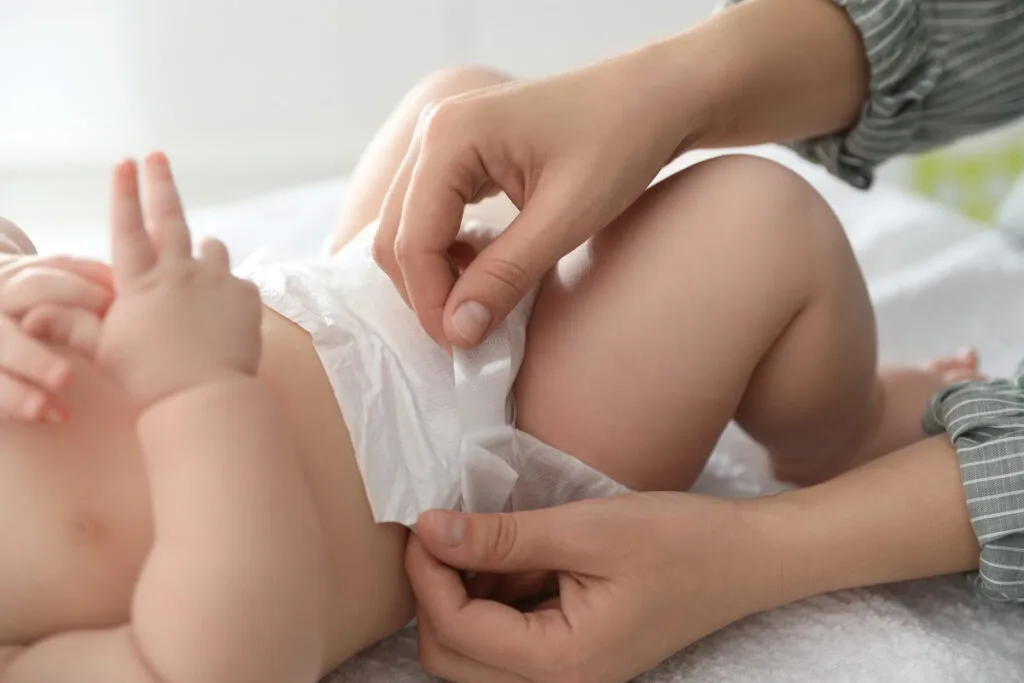
A Note on Diapering Boys to Prevent Leaks
THIS POST PROBABLY CONTAINS AFFILIATE LINKS. AS AN AMAZON ASSOCIATE, I EARN FROM QUALIFYING PURCHASES. YOU CAN READ OUR FULL DISCLOSURE POLICY HERE.
First, let’s address what might be obvious – or might not be, if you’ve never had a baby boy before. Boys tend to leak out the top of their diapers and up their bellies more than girls.
One thing that helps this is to point their boy parts (you know what I mean) downward as you cover them with the clean diaper, before securing it.
With that said, in my experience my son was a much “heavier wetter” than my girls. He was the baby peeing through his diaper at night far more often.
Some doctors have even found that breastfeeding baby boys take in more milk per day than baby girls, although this may not be consistent across the board.
But be prepared that boys can have a tendency to flood diapers, especially in the older baby stages!
You Might Also Like: Baby Crying in Their Car Seat? Here Are 15 Ways to Stop The Screaming
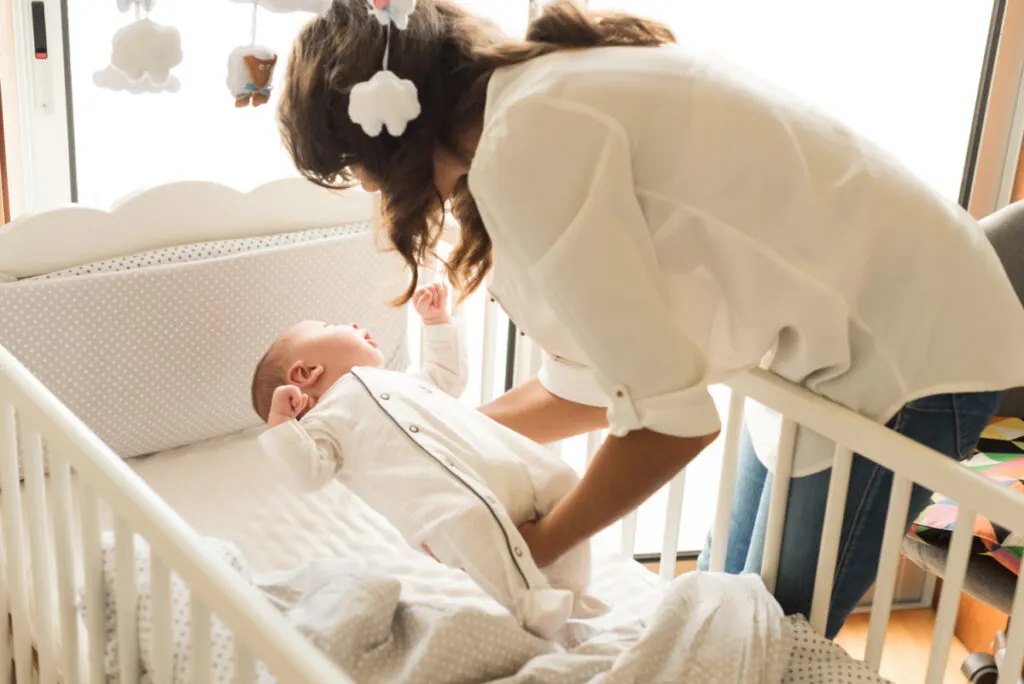
11 Possible Ways to Stop Overnight Diaper Leaks
The other thing to realize is that diaper absorbency isn’t the only reason your baby’s diaper leaks at night.
Getting a proper fit is just as important as the material or type/size of diaper you use.
We’ll address both of these issues with our tips!
You Might Also Like: Keep Your Baby From Climbing Out of the Crib with Parent-Tested Tips
1. Look into overnight diapers.
There was a time I was so sleep-deprived I actually forgot overnight disposable diapers existed. For some babies, these work really well.
They can be a little more pricey than their daytime counterparts, but might be well worth it, if your baby tolerates disposables well.
Cloth overnight diapers are another option. (Often called “cloth-fitted” diapers.) Most are made of heavy fleece or hemp, and they are basically a diaper-within a diaper.
You will need a separate waterproof diaper cover to go around them.
2. Use diaper covers over disposables.
Even if you wouldn’t normally use cloth diapers, you can purchase a few cloth diaper covers with either snaps or velcro, and layer them on top of your baby’s disposable diaper.
Covers are typically made of a waterproof material which can help keep leaks at bay.
Just keep an eye out for any irritation or rashes, as this may impact the breathability of your disposable diaper.
3. Use the next size up at bedtime.
For disposable diapers, the bigger diapers simply have more absorbent material to hold the excess liquid.
So as long as you make sure the tabs are good and snug, and there are no leg gaps (see next tip), the larger diaper might just do the trick.
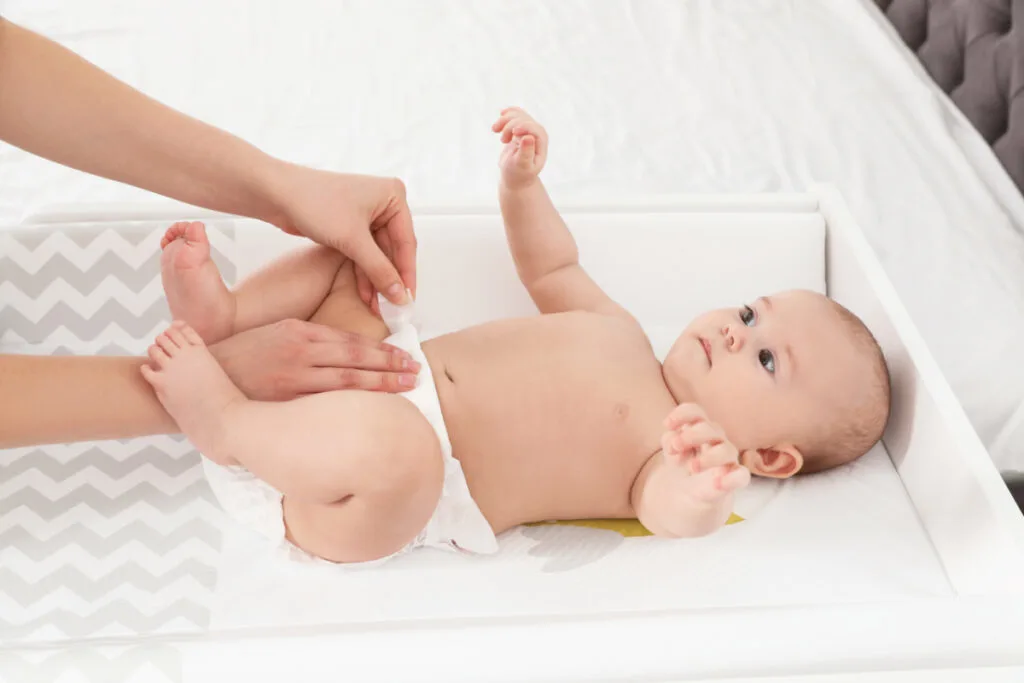
4. Check for leg gaps.
Sometimes a diaper can appear to be the right fit around the waist, but it can be ill-fitting around legs. I had this trouble with baby #4 who had long, skinny legs (and still does!).
To check for this, after the diaper is secured, lift up one leg and see if there are any visible gaps in the elastics around the leg.
If there are gaps, you probably need to size down, or try a different brand of diapers. I found that different brands fit each of my babies differently and we had to experiment to find the best fit.
(How I wish the same brands worked for every baby!)
Leg gaps can also happen if you over-stuff your cloth diapers or use an ill-fitting or bulky insert. I found this especially true with cloth “pocket diapers”.
5. Adjust the rise on cloth diapers.
If you’re using one-size cloth diapers, check the rise snaps. Babies can grow so quickly that you might not realize their diaper is suddenly a low-rise bikini brief!
Adjust to the next row down of rise snaps for extra coverage.
Again, be sure to check for leg gaps after you do this.
6. Tuck cloth diaper inserts all the way into the cover/shell.
If you’re new to cloth diapering, this is so SO important to know.
When using a cloth diaper that has a separate insert – either the kind that lies in the diaper or snaps in – make sure every bit of the material is tucked into the diaper cover or shell.
If any little part of that diaper insert is sticking out of the diaper (around the legs or out the front or back), it will create a channel for liquid to flow out.
If your insert is too wide or long for the diaper you’re using, you might need to switch inserts or shells for a better fit.
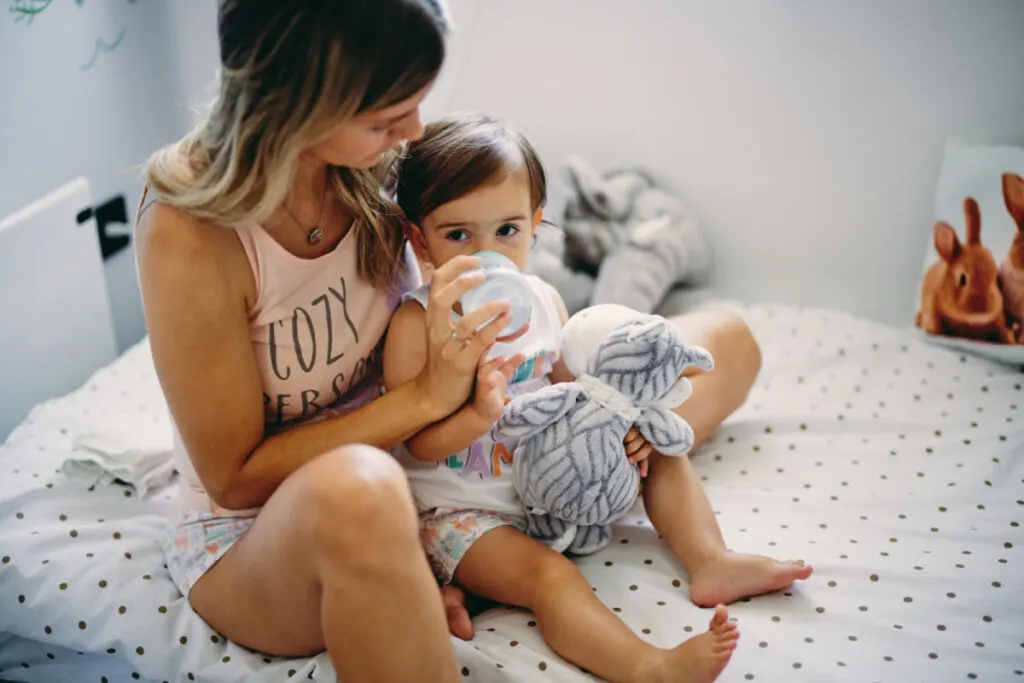
7. Try less liquids before bedtime.
This will only apply to older babies and toddlers, but it’s worth noting.
If possible, try to give some time between the last drink or feeding and the last diaper change before bed.
Going to bed with a bottle of milk or water can also be another common culprit of excessive nighttime wetting.
8. Avoid fruit juice and caffeine.
As babies get older, it can be tempting to give them treats like apple juice throughout the day. However, most pediatricians recommend against this for many reasons.
Another practical reason is that acidic drinks can make your baby urinate even more frequently.
Fruit juices, carbonated drinks of any kind and food or drinks with caffeine can all irritate the bladder (source), causing the need to urinate more often.
So if you’re breastfeeding, you may want to cut back on – or avoid – coffee and tea as well.
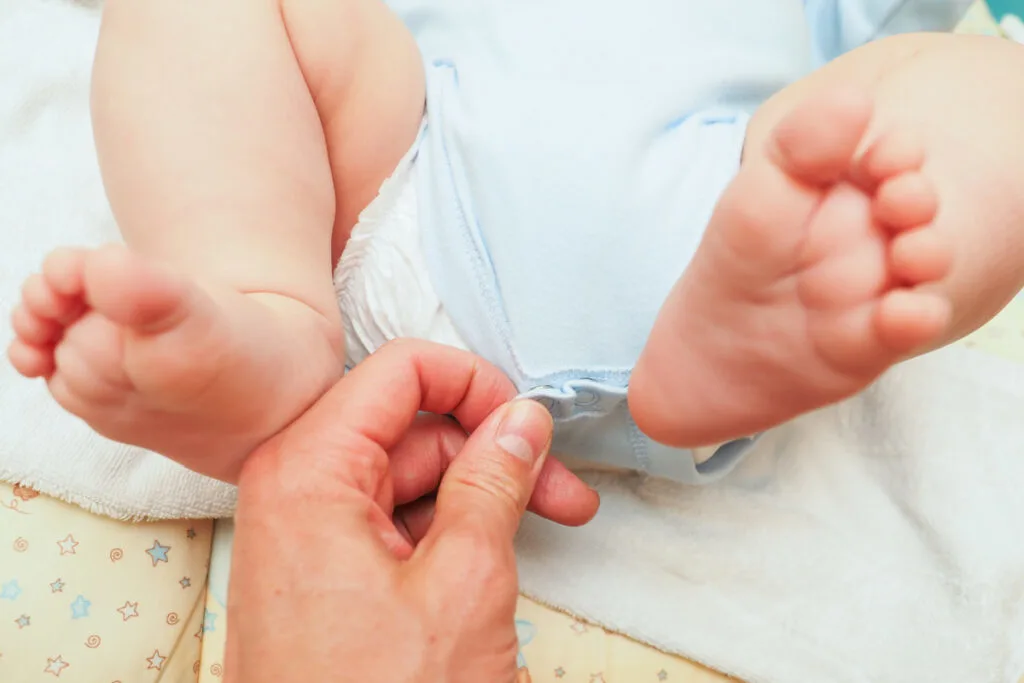
9. Invest in “doublers”.
I learned this trick when cloth diapering my son. There are a variety of different types of materials that can be used in cloth diapers, and some of these work well as liners inside any diaper (cloth or disposable).
My favorite doublers were made of bamboo (like THESE). They are incredibly soft and thin and did not add much bulk to the diapers.
You can even try using two of these as long as you can get a good, secure fit with the diaper around baby’s legs.
Other absorbent doublers include hemp and basic cotton.
Cotton prefolds can be folded into thirds for added layers of protection. Flour sack towels (yes, the kind you use in the kitchen) can also be folded into a diaper; you will be surprised how much liquid those things can hold!
One reason I preferred using doublers is because they were reusable and saved money versus buying overnight diapers. A handful of these weren’t too difficult to keep up with in the laundry, either.
Note: Be sure to wash and dry your new doublers before using them; depending on the material, some might need to be washed/dried more than once to reach maximum absorbency.
Related: Essential Cloth Diapering Tips Every Beginner Needs
10. Help baby sleep soundly.
Babies usually pee more when they are in between sleep cycles or starting to wake up — especially older babies and toddlers.
Therefore, one theory is that when they sleep more deeply, they will wet their diapers less frequently throughout the night.
If you feel that your baby needs help going to sleep or staying asleep, you might benefit from a sleep training course.
At Baby Sleep Made Simple, Jilly Blankenship, sleep and lactation consultant (and neonatal nurse) offers training programs to fit your lifestyle, whether breastfeeding/bottle feeding, co-sleeping/crib-sleeping.
I have to give two thumbs up for this program because my sister went through it recently and within a week, her 9-month old was sleeping long stretches at night, for the first time.
You Might Also Like: When Baby Cries After Bath Time – 13 Ways to Soothe Them FAST
11. Schedule an extra diaper change.
If your baby is sleeping pretty well through the night, you could consider getting up halfway through the night for a routine diaper change.
Or, if you go to bed a few hours after baby, change it before you turn in for the night.
Of course, this could create another problem where your baby learns to wake at that time every night. But it could be a temporary solution if all else fails or the amount of laundry you’re doing is unsustainable.

When You’re Trying to Stop Overnight Diaper Leaks, Patience (Usually) Pays Off
Hopefully by the time you try one or two of these tips, you will be well on your way to preventing nighttime diaper leaks for your little one.
Working through these solutions might take some patience, but it will be well worth the outcome: a drier, happier baby.
Which, of course, translates to better rest for everyone – a win for weary new parents!
Read Next: Baby Suddenly Hates Diaper Changes? Here’s 9 Practical Things You Can Do
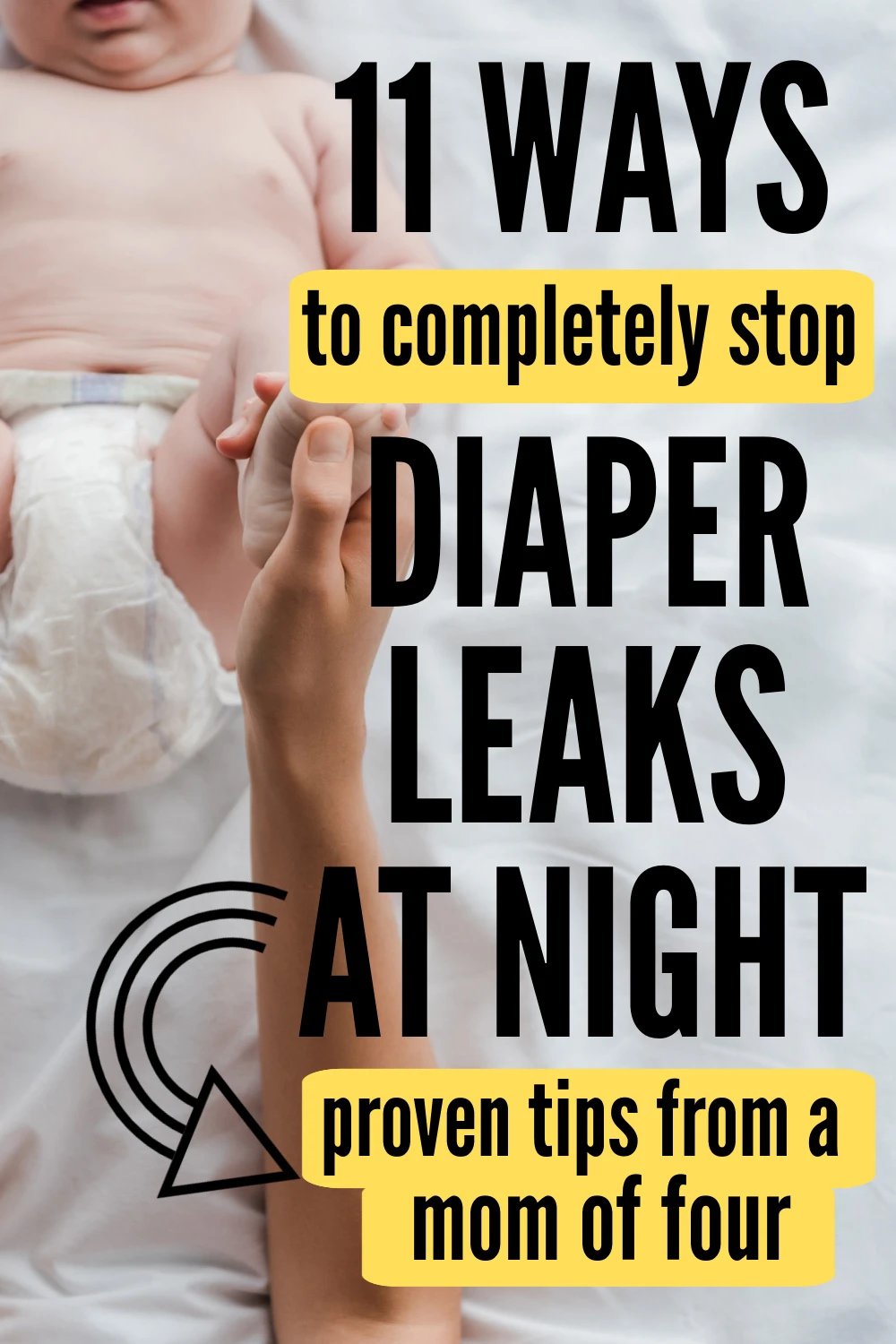
Brandi is a mom of four who can usually be found in the kitchen, the garden, or under a pile of laundry somewhere. She writes about faith, family and homemaking at Chicken Scratch Diaries. You can catch her most recent posts on Pinterest.